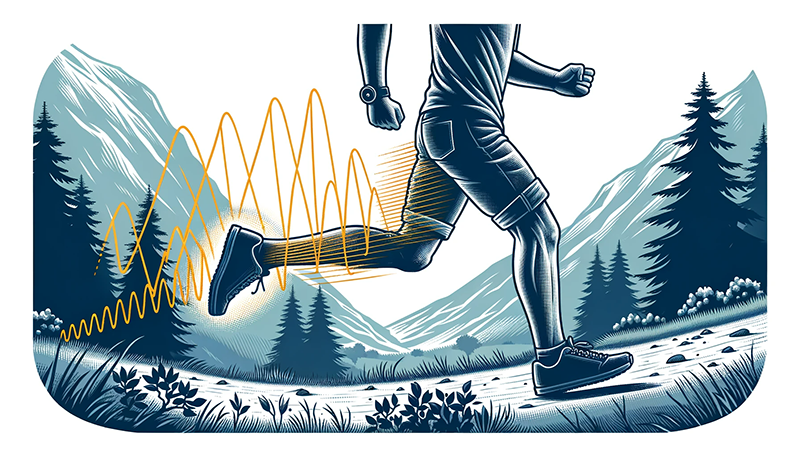Introduction
In recent years, there has been a growing awareness of the impact of sedentary behavior and physical activity on health and wellbeing. Both behaviors play significant roles in an individual’s overall wellness, as well as the risk of developing chronic diseases. This article aims to provide a comprehensive overview of the importance of measuring sedentary behavior and physical activity, with a particular focus on the needs of researchers and clinicians.
Sedentary time refers to the periods when an individual is engaged in activities requiring minimal energy expenditure, such as sitting, lying down, or watching television. The consequences of prolonged sedentary behavior are becoming increasingly evident, with research showing strong links to a range of health issues, including obesity, type 2 diabetes, cardiovascular diseases, and mental health disorders. As the body of evidence grows, so too does the need for accurate measurement tools to assess and monitor sedentary behaviors.
In contrast, physical activity encompasses any bodily movement produced by the contraction of skeletal muscles that results in energy expenditure. Regular physical activity has been shown to reduce the risk of chronic diseases, improve mental health, and enhance overall quality of life. However, it is essential to measure physical activity accurately to determine its impact on health and develop effective interventions.
Measuring physical activity and sedentary behavior accurately is crucial for both research and clinical settings. In research, accurate measurements provide a foundation for understanding the relationships between these behaviors and health outcomes, as well as the effectiveness of interventions. In clinical settings, accurate assessments can inform individualized treatment plans and guide patients towards healthier lifestyles.
There are various methods for measuring physical activity and sedentary behavior, each with its advantages and limitations. Objective tools, such as accelerometers, provide reliable and valid data on movement patterns, while self-report measures, like physical activity questionnaires, offer insights into individual perceptions and context. By understanding the nuances of these measurement tools, researchers and clinicians can make informed decisions about the best approach for their specific needs.
In this article, we will explore the importance of measuring sedentary behavior and physical activity, delving into the science behind these measurements, and discussing practical applications and future directions. We will also introduce the innovative measurement technologies offered by our company, designed to support researchers and clinicians in their pursuit of accurate and meaningful data.
To gain a deeper understanding of sedentary behavior and physical activity measurements, we encourage you to explore the following articles:
- Sedentary Behavior and Physical Activity Measurements
- Accelerometer: Measuring Physical Activity and Sedentary Behavior
- Special Populations: Activity and Sedentary Measurements
- Children and Adolescents: Activity and Sedentary Measurements
- Clinical Setting: Activity and Sedentary Measurements
- Occupational Activity: White and Blue Collar Workers
- Health Implications of Sedentary Behavior and Inactivity
- Promoting Activity through Virtual Coaching
Sedentary Behavior and Physical Activity: Defining the Concepts
Understanding Sedentary Behavior
Sedentary behavior refers to any waking activity characterized by an energy expenditure of 1.5 metabolic equivalents (METs) or lower, typically performed while sitting or reclining. Examples of common sedentary behaviors include watching television, working on a computer, and commuting by car or public transport.
There are various types of sedentary behaviors, which can be categorized by the context in which they occur, such as occupational (sitting at work), leisure-time (watching TV), or transportation-related (sitting while commuting). The health risks associated with sedentary lifestyles are well-documented and include obesity, type 2 diabetes, cardiovascular diseases, and some forms of cancer. As a result, understanding and measuring sedentary behavior has become a public health priority.
The Role of Physical Activity
Physical activity is defined as any bodily movement produced by the contraction of skeletal muscles that leads to energy expenditure. It encompasses a wide range of activities, from daily tasks such as walking or housekeeping to more structured forms of exercise like sports or fitness classes.
Physical activities can be classified by their intensity levels: light, moderate, or vigorous. Light activities, such as casual walking or stretching, require relatively little effort, while moderate activities, like brisk walking or cycling, demand more energy. Vigorous activities, such as running or playing basketball, require the greatest effort and lead to rapid breathing and an increased heart rate.
Regular physical activity offers numerous health benefits, including reduced risk of chronic diseases, improved mental health, and enhanced overall quality of life. To effectively study the impact of physical activity on health, it is essential to accurately measure physical activity levels.

Accurate measurements of physical activity and sedentary behavior can be obtained using a variety of tools, ranging from self-report questionnaires to objective devices like accelerometers. The choice of measurement tool depends on the research or clinical context, as well as the desired level of accuracy and detail.
It is crucial for researchers and clinicians to understand the nuances of different measurement tools and select the most appropriate method for their specific needs. By defining the concepts of sedentary behavior and physical activity, and understanding their roles in health, researchers and clinicians can better appreciate the importance of accurate measurements and make informed decisions regarding the best measurement tools for their work.
The Science Behind Measuring Sedentary Behavior and Physical Activity
The Need for Accurate Measurements
The accurate assessment of physical activity and sedentary behavior is vital for both research purposes and clinical practice. In research, precise measurement enables a better understanding of the relationship between these behaviors and various health outcomes. Moreover, it facilitates the development of effective interventions and policies to reduce sedentary time and promote active lifestyles. In clinical practice, accurate assessment helps healthcare professionals identify individuals at risk and develop tailored interventions for their patients.
Objective vs. Subjective Measures
There are two main approaches to measure physical activity and sedentary behavior: objective and subjective methods. Subjective methods, such as self-reported questionnaires, rely on individuals’ recall and perception of their activity levels. While these methods can be convenient and cost-effective, they are prone to biases and inaccuracies, such as over- or under-reporting.
Objective methods, on the other hand, use devices like accelerometers, pedometers, or heart rate monitors to assess physical activity more accurately. These devices provide quantitative data on the intensity, frequency, and duration of physical activity and breaks in sedentary time. Although objectively measured physical activity and sedentary time measures are generally more reliable than subjective methods, they can be more expensive and may require specialized expertise to interpret the data.
Cutting-Edge Measurement Technologies

Recent advancements in technology have led to the development of innovative devices and tools for measuring sedentary behavior and physical activity. Wearable devices, such as activity trackers and smartwatches, enable continuous monitoring of individuals’ activity levels throughout the day. In addition, advanced sensors and algorithms can differentiate between various types of physical activities and sedentary behaviors, providing more nuanced insights into individuals’ daily routines.
At our company, we offer a range of state-of-the-art measurement technologies designed to accurately assess physical activity and sedentary behavior in various populations and settings. These devices are tailored to the unique needs of researchers and clinicians, providing user-friendly solutions for data collection, analysis, and interpretation. To learn more about our product offerings, visit our measurement technologies page.
In conclusion, the accurate measurement of physical activity and sedentary behavior is essential for understanding their impact on health and wellbeing. By using objectively measured sedentary behavior and physical activity methods and cutting-edge technologies, researchers and clinicians can gather valuable data to inform intervention strategies and promote healthier lifestyles.
Analyzing Data on Sedentary Behavior and Physical Activity
Statistical Techniques for Data Analysis
Accurate data analysis is a critical aspect of research on sedentary behavior and physical activity, as it allows researchers and clinicians to draw meaningful conclusions and make informed decisions. Common statistical methods used in the analysis of measurement of physical activity and sedentary behavior data include:
- Descriptive statistics (e.g., mean, median, standard deviation)
- Inferential statistics (e.g., t-tests, ANOVA, regression analysis)
- Multivariate analysis (e.g., principal component analysis, factor analysis)
- Time series analysis (e.g., autoregressive integrated moving average)
These statistical techniques help researchers understand patterns and relationships within the data, assess the effectiveness of interventions, and identify factors that influence health outcomes.
Interpreting Results and Drawing Conclusions
Proper interpretation of results from sedentary behavior and physical activity data is essential for drawing meaningful conclusions and making evidence-based recommendations. Here are some tips for interpreting results and drawing conclusions:
- Contextualize the findings: Consider the study population, setting, and research question when interpreting the results. For example, results from a study investigating international physical activity levels may not be directly applicable to a specific local community.
- Evaluate the statistical significance: Assess the statistical significance of the findings, considering factors like sample size, effect size, and statistical power. A statistically significant result indicates that the observed relationship is unlikely to be due to chance alone.
- Consider the practical significance: Besides statistical significance, consider the practical significance of the findings. For instance, a small but statistically significant increase in physical activity may not have a meaningful impact on overall health.
- Acknowledge limitations and confounding factors: Recognize the limitations of the study, such as potential biases, measurement errors, and confounding factors that may have influenced the results. This helps to avoid overgeneralization and ensures that conclusions are based on sound evidence.
- Make evidence-based recommendations: Based on the results, make recommendations for future research, interventions, or policies aimed at promoting physical activity and reducing sedentary behavior.
In summary, analyzing and interpreting data on sedentary behavior and physical activity is a crucial aspect of research and clinical practice. By applying appropriate statistical techniques and carefully interpreting the results, researchers and clinicians can draw meaningful conclusions, make evidence-based recommendations, and ultimately contribute to the improvement of public health. To learn more about the methods and tools used in sedentary behavior and physical activity measurement, visit our methods and tools page.
Practical Applications and Future Directions
Implementing Interventions to Promote Physical Activity
With the growing body of sedentary behaviour research, it is essential to develop effective strategies for promoting daily physical activity and reducing sedentary behavior. Examples of successful interventions in various settings include:
- School-based programs: Integrating physical activity into the school curriculum, providing opportunities for active play, and promoting active transportation to and from school.
- Workplace interventions: Encouraging employees to take regular breaks, providing standing desks, and offering physical fitness facilities or subsidized gym memberships.
- Community initiatives: Creating safe and accessible public spaces for physical activity, organizing group exercise classes, and offering incentives for participation.
These strategies aim to help individuals meet physical activity guidelines and improve overall health. It is crucial to tailor interventions to the target population, considering factors like age, socio-economic status, and cultural context.
The Role of Technology in Monitoring and Promoting Physical Activity
Technology plays a significant role in the future of physical activity promotion. Wearable devices, apps, and online platforms are increasingly being used to measure time spent in sedentary behavior and physical activity, providing valuable data to inform intervention planning and monitor progress.
- Wearable devices: Devices like accelerometers, heart rate monitors, and smartwatches can track physical activity levels and assess sedentary behavior in real-time, providing users with immediate feedback and personalized recommendations.
- Apps: Smartphone apps offer features like goal setting, activity tracking, and social support, helping users build and maintain healthy habits.
- Online platforms: Virtual coaching, telehealth services, and web-based interventions can provide remote support and guidance, increasing the accessibility of physical activity promotion efforts.
In the future, advances in technology are expected to further enhance our ability to monitor and promote physical activity. Developments like machine learning, artificial intelligence, and the Internet of Things (IoT) may enable the creation of highly personalized interventions that adapt to individual needs and preferences. Moreover, advances in data analysis and visualization techniques will allow researchers and clinicians to gain new insights into the factors that influence physical activity behavior and develop more effective interventions.

In conclusion, implementing interventions to promote physical activity and leveraging technology to monitor and encourage healthy behaviors are essential for improving public health. By staying informed on the latest developments in research and technology, researchers and clinicians can contribute to the advancement of physical activity promotion efforts and ultimately help individuals lead healthier lives. To learn more about the methods and tools used in sedentary behavior and physical activity measurement, visit our methods and tools page.
Markdown Table: Comparing Measurement Techniques

This table provides an overview of various measurement techniques for assessing physical activity and sedentary behavior, outlining their descriptions, advantages, and disadvantages. Understanding the strengths and limitations of each method can help researchers and clinicians select the most appropriate approach for their specific needs.











